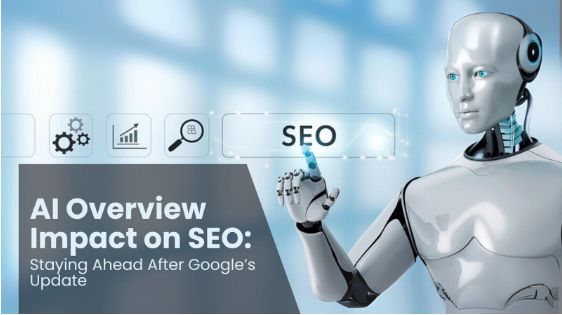1. Electric Vehicles (EVs) on the Rise
One of the most significant shifts in the automotive industry today is the rise of electric vehicles (EVs). With growing concerns about climate change, environmental regulations, and the need for cleaner transportation solutions, EVs have moved from being a niche market to a mainstream option.
Key Drivers:
- Environmental Awareness: Governments worldwide are setting ambitious targets for reducing carbon emissions, which has prompted automakers to invest heavily in EV technology.
- Government Incentives: Tax rebates, subsidies, and other incentives for consumers and manufacturers are helping drive the adoption of EVs.
- Improved Battery Technology: As battery technology continues to improve, the range of electric vehicles has increased, making them more practical for everyday use.
- Expanding Charging Infrastructure: The growth of charging stations is making it easier for EV owners to find convenient charging spots, reducing range anxiety.
Major EV Players:
- Tesla continues to dominate the market with models like the Model 3, Model Y, and upcoming Cybertruck.
- Traditional automakers such as Ford, Volkswagen, and GM are also ramping up their EV efforts, with models like the Ford Mustang Mach-E and VW ID.4 already on the road.
2. Autonomous Driving and Advanced Driver Assistance Systems (ADAS)
The dream of fully autonomous vehicles (AVs) is gradually becoming a reality, although full autonomy is still a few years away. In the meantime, advanced driver assistance systems (ADAS) are making driving safer and more convenient. These technologies include features like adaptive cruise control, lane-keeping assist, automatic emergency braking, and parking assist.
Key Drivers:
- Safety: The goal of AVs is to reduce human error on the road, leading to fewer accidents and improved road safety.
- Convenience: ADAS systems are designed to make driving less stressful and more enjoyable, especially in heavy traffic or long road trips.
- Technological Advancements: Improvements in sensors, machine learning, and AI algorithms are bringing autonomous vehicles closer to reality.
The Future of Autonomous Driving:
- Waymo (a subsidiary of Alphabet/Google) and Cruise (owned by General Motors) are pioneers in the development of autonomous ride-hailing services.
- Tesla’s Full Self-Driving (FSD) feature is continuously being updated, bringing us closer to a fully autonomous future.
3. Connected Cars and the Internet of Things (IoT)
As more vehicles are equipped with internet connectivity, the concept of connected cars is becoming increasingly common. These vehicles use the Internet of Things (IoT) to connect with other devices, infrastructure, and networks, creating a seamless experience for drivers and passengers.
Key Drivers:
- Infotainment and Connectivity: Consumers now expect features like real-time traffic updates, hands-free calling, and smartphone integration through platforms like Apple CarPlay and Android Auto.
- Vehicle-to-Everything (V2X) Communication: This allows cars to communicate with each other and the surrounding infrastructure (e.g., traffic signals, road signs), improving safety and traffic flow.
- Over-the-Air (OTA) Updates: Similar to smartphones, cars are now receiving software updates remotely, improving performance and adding new features without requiring a visit to the dealership.
Examples:
- BMW and Mercedes-Benz are among automakers offering advanced connected car services, including personalized driver experiences and predictive maintenance alerts.
- Tesla is known for regularly updating its vehicles with new features and performance improvements via OTA updates.
4. Sustainability and Green Manufacturing
The push for sustainability is not just limited to electric vehicles; it extends across the entire automotive production process. From sourcing raw materials to reducing waste and energy consumption, automakers are working to make their manufacturing processes more sustainable.
Key Drivers:
- Consumer Demand: Increasing awareness of environmental issues is making sustainability a key consideration for car buyers.
- Regulatory Pressure: Governments around the world are enforcing stricter emissions regulations, pushing automakers to adopt cleaner practices.
- Circular Economy: Manufacturers are focusing on reducing waste by using recycled materials and rethinking vehicle design for better recyclability.
Examples:
- Ford is using sustainable materials such as recycled plastics and plant-based components in their vehicles.
- BMW has committed to reducing the carbon footprint of its entire manufacturing process, including using renewable energy in its factories.
5. Shared Mobility and Ride-Hailing Services
The way people think about car ownership is changing. The rise of shared mobility services, such as ride-hailing and car-sharing, is transforming transportation, especially in urban areas. More consumers are opting for services like Uber, Lyft, and Zipcar rather than purchasing a vehicle outright.
Key Drivers:
- Urbanization: As more people move to cities, owning a personal car may no longer be practical due to the cost of parking and the availability of public transportation and shared mobility services.
- Convenience: Ride-hailing services make it easier for users to access transportation without the responsibility of ownership.
- Environmental Concerns: Car-sharing reduces the number of vehicles on the road, helping decrease congestion and lower emissions.
Examples:
- Uber and Lyft continue to expand their fleets and services, including integrating electric vehicles and autonomous cars into their offerings.
- Shared Mobility Platforms like Turo are gaining popularity as more people look to rent cars from private owners for short-term use.
6. Alternative Fuels and Powertrains
While electric vehicles are taking center stage, other alternative fuels are also gaining traction as part of the truthin24.com push toward sustainability. Hydrogen fuel cells, compressed natural gas (CNG), and biofuels are among the alternatives being explored by automakers.
Key Drivers:
- Energy Diversification: With the push for cleaner energy sources, automakers are investing in various fuel types to diversify their powertrains.
- Infrastructure Development: The expansion of hydrogen fueling stations and the availability of alternative fuel sources are helping support these technologies.
Examples:
- Toyota Mirai is one of the most well-known hydrogen fuel cell vehicles, showcasing the potential for zero-emission hydrogen-powered cars.
- Honda and Hyundai are also exploring hydrogen fuel cell vehicles as a viable alternative to traditional gasoline-powered cars.
7. Personalization and In-Car Experience
As consumers demand more customization and a premium experience, automakers are focusing on creating personalized in-car experiences. From customizable interiors to advanced infotainment options, the car is becoming an extension of a person’s lifestyle.
Key Drivers:
- Technology Integration: Advances in AI, machine learning, and voice recognition are making it easier to tailor in-car experiences.
- Comfort and Luxury: Consumers expect a higher level of comfort, with features like climate control, seat personalization, and premium audio systems becoming the norm.
Examples:
- Mercedes-Benz MBUX (Mercedes-Benz User Experience) is an advanced infotainment system that allows drivers to personalize their driving experience with voice commands and AI-powered features.
- Audi offers customizable interior lighting and seating positions to suit different drivers’ preferences.
Conclusion: The Future of the Automotive Industry
The automotive industry is on the brink of a major transformation. From electric vehicles to autonomous driving technologies and a push for more sustainable manufacturing, these trends are shaping the way we think about cars, transportation, and mobility. As new technologies continue to evolve, consumers can expect a more connected, convenient, and sustainable driving experience in the years to come.
Automakers who can successfully adapt to these trends will not only meet the demands of today’s consumers but will also help define the future of mobility.




